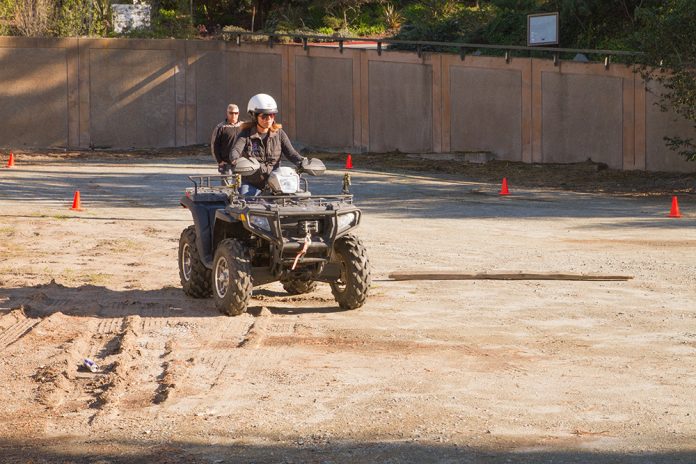
In today’s agricultural industry, all-terrain vehicles (ATVs) have become an increasingly critical tool in managing operations in orchards. Starting in the 1980s, when companies began exploring how ATVs could be used in a variety of on-farm capacities, there are now tens of millions of these pieces of equipment being used in agriculture across the U.S. As a result, it is critical to know the hazards associated with ATVs and how to operate them safely.
The Law
It is important to understand that ATVs, when used in an agricultural operation, are legally viewed differently than when being operated recreationally. If you are enjoying an ATV for fun or in any personal capacity, the safe use is governed by California Vehicle Code 38503 and enforceable by both local law enforcement agencies as well as the California Highway Patrol.
Alternatively, when used in an agricultural operation, the legal jurisdiction falls to the Department of Industrial Relations’ Division of Occupational Safety and Health (Cal/OSHA) and is guided by the California Code of Regulations, Title 8, Section 3664. This section specifically refers to the operating rules of agricultural equipment. It specifically lays out what is required of an operator in terms of safely using the equipment. To read CCR, Title 8, Section 3664 in its entirety, visit dir.ca.gov/title8/3664.html.
Essential Elements of an ATV Safety Program
Given that CCR, Title 8, Section 3664 is so explicit in its directive on how to safely operate agricultural equipment, it should come as no surprise that a business needs to have a written ATV safety program that includes several important elements. Programs need to outline expectations of safe operation, maintenance, vehicle pre-inspection, the appropriate personal protective equipment (PPE) to be worn and the protocol for responding to an ATV-related emergency. As with any written safety program, employees operating these machines need to be trained in the program’s components as well as be educated in how to safely operate the ATV.
Here are a few key concepts to keep in mind relative to the needed elements of an ATV safety program. This is not a complete list of elements. A complete ATV safety program must include company-specific protocol, hazards, unique identifiers, and other applicable processes unique to each individual operation.
Safe Operation
Use the elements outlined in CCR, Title 8, Section 3664 as your guide:
Where possible, avoid operating the ATV near ditches, embankments and holes.
Reduce speed when turning, crossing slopes, and on rough, slick or muddy surfaces.
Stay off slopes too steep for safe operation.
Watch where you are going, especially at row ends, on roads and around trees.
Do not permit others to ride.
Operate the ATV smoothly; no jerky turns, starts or stops.
Hitch only to the drawbar and hitch points recommended by the ATV manufacturer.
When the ATV is stopped, set brakes securely and use park lock if available.
Vehicle Pre-Inspection
Create an ATV pre-inspection checklist log to be reviewed and signed daily by operators.
Ensure that the log has space for operators to note any maintenance-related issues.
Coordinate log review by the operator’s supervisor and/or maintenance staff to ensure that maintenance issues are reported in a timely fashion.
Pre-inspection checklists should include, at minimum, review of: Tires and wheels; controls and cables; lights and electrical systems; oil and fuel levels; chain and/or drive shaft; brakes; caution and warning labels; emergency tool kit; and first aid kit
Personal Protective Equipment
The leadership of each business needs to consider the various uses for ATVs within their operation to best determine the most complete list of personal protective equipment that needs to be worn by operators.
All PPE must be provided by the employer at no cost to the employee.
PPE should include, at minimum, the following: US Department of Transportation (USDOT) approved helmet; eye protection; gloves; boots; long-sleeved shirt; long pants; and high visibility vest/jacket/outer clothing
Now What?
The busy season is here, and it is critical that agricultural operations ensure they have a complete and robust ATV safety program in place. According to the U.S. Department of Labor, California leads the nation in the number of annual ATV fatalities, which is as much a reflection of the wide-spread use of these pieces of equipment as it is our not having holistic safety operating programs in place. Do not allow your employees to become a statistic and invest the time now into creating the safest possible ATV program.
For more information about ATV safety, do not hesitate to contact AgSafe at www.agsafe.org or 209-526-4400. AgSafe is a non-profit organization whose mission is to provide practical health and safety resources to the agricultural industry.










